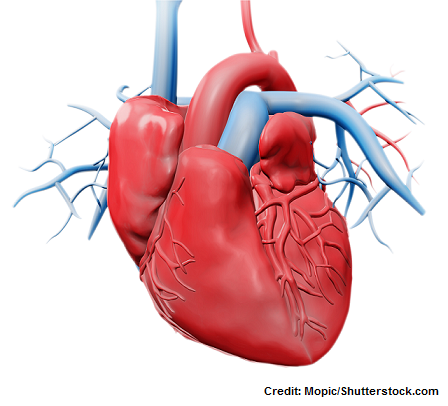Patent Ductus Arteriosus NCLEX questions for nursing students. Patent ductus arteriosus (PDA) is a congenital heart defect disorder.
Before taking the quiz, don’t forget to watch the lecture on patent ductus arteriosus.
This quiz is part of a pediatric NCLEX review series.

Patent Ductus Arteriosus (PDA) NCLEX Questions
This quiz contains patent ductus arteriosus NCLEX questions that will prepare you for the NCLEX exam.
(NOTE: When you hit submit, it will refresh this same page. Scroll down to see your results.)
Patent Ductus Arteriosus NCLEX Questions
1. You’re caring for a 2-day-old infant with a large patent ductus arteriosus. The mother of the infant is anxious and asks you to explain her child’s condition to her again. Which statement below BEST describes this condition?
A. “The vessel connecting the aorta and pulmonary vein has closed prematurely, which is leading to increased blood flow to the lungs.”
B. “The vessel connecting the aorta and pulmonary artery has failed to close at birth, which is leading to a left-to-right shunt of blood.”
C. The vessel connecting the aorta and pulmonary vein has failed to close at birth, which is leading to a right-to-left shunt of blood.”
D. “The vessel connecting the aorta and pulmonary artery has closed prematurely, which is leading to a left-to-right shunt of blood.”
The answer is B. Patent ductus arteriosus (PDA) occurs when the vessel that normally connects the aorta and pulmonary artery in utero has failed to close at birth, which leads to a left-to-right shunting of blood. This shunting of blood will increase blood flow to the lungs and can cause pulmonary hypertension and eventually heart failure (left-sided), especially if the PDA is large.
2. As the nurse you know which statements below are correct about the ductus arteriosus? Select all that apply:
A. “The ductus arteriosus is a structure that should be present in all babies in utero.”
B. “The ductus arteriosus normally closes about 3 days after birth or sooner.”
C. “The purpose of the ductus arteriosus is to help carry blood that is entering the left side of the heart to the rest of the body, hence bypassing the lungs.”
D. “The ductus arteriosus connects the aorta to the pulmonary vein.”
The answers are A and B. These are correct statements about the ductus arteriosus. Option A is correct because every newborn should have this structure, but it will close shortly after birth. Option C is wrong because the purpose of this structure is to help carry blood that is entering the RIGHT side (not left) of the heart to the rest of the body, hence bypassing the lungs. Option D is wrong because this structure connects the aorta to the pulmonary ARTERY (not vein).
3. While assessing a newborn’s heart sounds you note a loud murmur at the left upper sternal border. You report this to the physician who suspects the infant may have patent ductus arteriosus. The physician asks you to obtain a pulse pressure. If patent ductus arteriosus is present, the pulse pressure would be ___________.
A. Narrow
B. Fluctuating
C. Wide
D. Normal
The answer is C. The pulse pressure will be widened. Pulse pressure is the difference between the systolic and diastolic pressure and indicates the force the heart needs to contract. With PDA, the diastolic pressure will be low, which will widen the difference between the systolic and diastolic pressure. WHY? When blood is leaving through the extra vessel (patent ductus arteriosus) back into the pulmonary artery, this will decrease diastolic pressure (which is the pressure of the blood in the arteries when the heart if filling or in between heart beats). This will lead to a wide pulse pressure, hence a decrease is diastolic pressure and will then in turn lead to bounding pulses.
4. As noted in the previous question, a loud murmur was noted during assessment of a newborn with patent ductus arteriosus. As the nurse you know that what type of murmur is a hallmark sign of this condition?
A. harsh, loud systolic murmur
B. soft, blowing diastolic murmur
C. systolic and diastolic machinery-like murmur
D. machinery-like murmur present on only diastole
The answer is C. The hallmark murmur with PDA is a continuous (heard both during diastole and systole) that is harsh and machinery-like. It can be noted at the left upper sternal border.
5. You’re working on a unit that provides specialized cardiac care to the pediatric population. Which patient below would be the best candidate for Indomethacin from the treatment of patent ductus arteriosus?
A. A 25-year-old adult
B. A premature infant
C. An 8 month old child
D. A 12 year old child
The answer is B. A medication (NSAIDs) can be used to close the ductus arteriosus. Indomethacin is a prostaglandin inhibitor. It is used in premature babies or sometimes in very young infant’s days old. It won’t work for older infants, children, or adults.
6. You’re working in the NICU providing care to a neonate who has a large patent ductus arteriosus. Which finding during your head-to-toe assessment would require you to immediately notify the physician?
A. Loud, harsh continuous murmur
B. Abnormal pulse pressure
C. Crackles
D. Diaphoresis when feeding
The answer is C. Options A, B, and D (although are abnormal findings) is expected to be found in a large PDA. However, option C is a sign and symptoms that the patient is entering into left-sided heart failure (a life-threatening complication of this condition in a neonate), which would require immediate intervention. PDA can lead to heart failure when the left-to-right shunt is severe enough.
7. You’re providing education to the parents of a child who has a patent ductus arteriosus. The parents want to know the complications of this condition. In your education, you will include which of the following complications of PDA? Select all that apply:
A. Heart failure
B. Pulmonary hypertension
C. Recurrent lung infections
D. Clubbing of the fingernails
E. Endocarditis
F. Pulmonary stenosis
The answers are A, B, C, and E. These are complications that can occur with PDA. Clubbing of the nails can be seen in tetralogy of fallot.
More NCLEX Quizzes
Don’t forget to tell your friends about this quiz by sharing it your Facebook, Twitter, and other social media. You can also take more fun nursing quizzes.
*Disclaimer: While we do our best to provide students with accurate and in-depth study quizzes, this quiz/test is for educational and entertainment purposes only. Please refer to the latest NCLEX review books for the latest updates in nursing. This quiz is copyright RegisteredNurseRn.com. Please do not copy this quiz directly; however, please feel free to share a link to this page with students, friends, and others.
